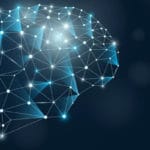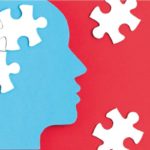Mandela effect: the meaning, basics and some examples

Mandela Effect: This article explains the Mandela Effect in a practical way. Next to what it is (definition and meaning), this article also highlights how does false memory arise, researching false memories and some examples of the Mandela Effect. After reading you will understand the basics of this psychology theory. Enjoy reading!
What is the Mandela Effect?
The definition and meaning of the Mandela Effect
The Mandela Effect is a phenomenon where many people believe that something actually happened, when in reality it never happened. These people insist that they remember an event or experience, even if it has been shown to be incorrect.
The name of the Mandela Effect refers to a massive false memory that South African president Nelson Mandela died in prison. He did not die in prison, but in his own home in 2013. Related events, such as the death of prominent anti-apartheid activist Steve Biko in prison, have led to the emergence of this false memory.
Who coined the term Mandela Effect?
The term Mandela Effect was coined by Fiona Broome, an author and self-proclaimed paranormal consultant. She found out about this phenomenon after countless people told her their memories of the event.
The term is now used to describe a false memory that, despite the memory being false, has become truth in the minds of masses of people. Fiona Broome indicates that the Mandela Effect could be evidence of the existence of alternate realities.
How does a false memory arise?
In psychology, the above is known as a false memory. Literature on the subject shows several causes for the emergence of a false memory:
- Suggestibility
- Activation of associated information
- Taking in wrong information
- Taking in wrong resource allocation
These mechanisms underlie a wide collection of false memory types.
Suggestibility is also referred to as confabulation. Confabulation involves the brain automatically filling in gaps that are missing from memories. This is done to better understand memories, but also to make them easier to remember.
This is not the same as lying, because it is not done consciously. It’s just remembering details that never existed. Confabulation often increases as an individual ages.
Misleading information also belongs to the list of possibilities why false memories exist. Information that someone takes in after an event has happened can change the memory of the same event. That explains why eyewitness statements are sometimes unreliable or different from reality.
Researching false memories
Although the term Mandela Effect came to be known only in the years after Nelson Mandela’s death in 2013, the phenomenon has been explored much earlier by pioneers of psychology Sigmund Freud and Pierre Janet.
Sigmund Freud is known to have been fascinated by human memory and all the ways in which one can describe, use and manipulate this memory. Many experts agree that his research on memory has been an important contribution to the contemporary understanding of memory and false memories.
Pierre Janet was a French neurologist who also made important contributions to research on how memory works. He specifically contributed to explaining the phenomenon of false memories through his studies on dissociation and memory retrieval through hypnosis.
Examples of the Mandela Effect
In addition to the collective false memory of Nelson Mandela’s death in prison, there are a few other situations in which a massive false memory is assumed to be the truth.
Bologna Station Clock
One of the few examples of false memories that is well documented comes from 2010. It concerns the situation of the damaged station clock at Bologna Central Station. This clock was damaged during the Bologna bombing in 1980.
Later research showed that 92% of the respondents were sure that the clock remained at a stop in the years that followed. In reality, the clock was repaired and put into operation very soon after the attack.
Years later, the clock was stopped at the time of the attack to commemorate the attack.
Star Wars: The Empire Strikes Back
Another well-known example of a false memory concerns a well-known scene from the movie The Empire Strikes Back, the second Star Wars movie from 1980. The scene in question is one of the most famous scenes in all of cinema history. Darth Vader reveals to Luke Skywalker that he didn’t kill his father, but that he is his father.
Many people remember the sentence he uses to make this revelation as, “Luke, I am your father,” when in reality he says, “No, I am your father.”
Since Darth Vader was talking to Luke, it wouldn’t have made much sense to mention Luke’s name again. Many people add the name Luke to the sentence, because it is more impressive and because it adds context. People immediately know which film it is about.
Other examples of the Mandela Effect
Other examples of the Mandela Effect include the Berenstain Bears children’s books, which are often spelled as Berenstein, and the existence of the 90s movie Shazaam, which in reality does not exist.
The false memories of the existence of the movie Shazaam are explained as a combination of real memories, such as the TV marathon in which the comedian wears a ghost costume and an animated series called Shazzan.
Parallel Universe
According to the creator of the term Mandela Effect, Fiona Broome, paranormal explanations should not be excluded when investigating the explanation for the occurrence of false memories. One of the paranormal explanations is the existence of one or more parallel universes or alternate realities.
In one of her videos, Broome points out that the people who “incorrectly” remember these things are remembering things that have never occurred in our reality. According to her, the Mandela Effect could therefore occur when our reality interacts with a parallel universe. An explanation could be found in an interplay of quantum physics, string theory and the M-theory.
String theory is a theoretical framework that attempts to explain the nature of reality and the existence of the entire universe in a formula.
Although highly controversial and unproven, those who believe that there is a parallel universe claim that our universe is only 1 of the potentially unlimited universes.
The complete picture would then be called the multiverse.
Summary Mandela Effect
Also known as a false memory, the term Mandela Effect was coined by Fiona Broome, an author and self-proclaimed paranormal specialist. She and her followers believe that false memories may arise from the existence of an alternate reality. That means that there is a universe that runs parallel to our universe, in which things happen at the same time, but sometimes slightly differently.
The phenomenon garnered significant news coverage in recent years. It refers to the collective misremembering of certain events or details by a large group of people. One of the most famous examples involves South African President Nelson Mandela, who died in 2013.
Many individuals distinctly recall Mandela dying while still in prison in the 1980s, despite historical records proving otherwise. The Mandela Effect has sparked numerous debates and discussions, with paranormal researchers delving into the potential causes behind these shared false memories.
This curious effect has also been linked to other instances, such as the “Magic mirror on the wall” line from Snow White, the spelling of the Berenstein Bears, and more.
Extensive research has been done on the phenomenon in psychology. Pioneers Sigmund Freud and Pierre Janet laid the foundation for this, with their research into the workings of human memory and the ways in which it can be manipulated.
It later became clear that suggestibility, associated information, misinformation and misrepresentation, among other things, can cause a collective false memory to arise.
Examples of collective false memory include, among others, a Star Wars movie scene, the Bologna station clock, and the Berenstain Bears children’s books.
Now it’s your turn
What do you think? Do you recognize the explanation about the Mandela Effect? Can you share an example of a situation that you thought actually happened, but later turned out not to have happened? What do you think is the reason the Mandela Effect occurs? Do you have any tips or comments?
Share your experience and knowledge in the comments box below.
More information
- French, A. (2019). The Mandela Effect and New Memory. Correspondences, 6(2).
- Prasad, D., & Bainbridge, W. (2021). The Visual Mandela Effect as evidence for shared and specific false memories across people.
- Lincoln, D. (2017). The Mandela Effect. Fermi National Accelerator Lab.(FNAL), Batavia, IL (United States).
- Moss, J. P. (2019). The Mandela Effect. Lulu. com.
- Hall, J. (2014). The Mandela effect on conflict in Africa. Africa Conflict Monthly Monitor, 2014(01), 4-9.
How to cite this article:
Janse, B. (2022). Mandela Effect. Retrieved [insert date] from Toolshero: https://www.toolshero.com/psychology/the-mandela-effect/
Original publication date: 05/13/2022 | Last update: 04/11/2024
Add a link to this page on your website:
<a href=”https://www.toolshero.com/psychology/the-mandela-effect/”>Toolshero: Mandela Effect</a>












